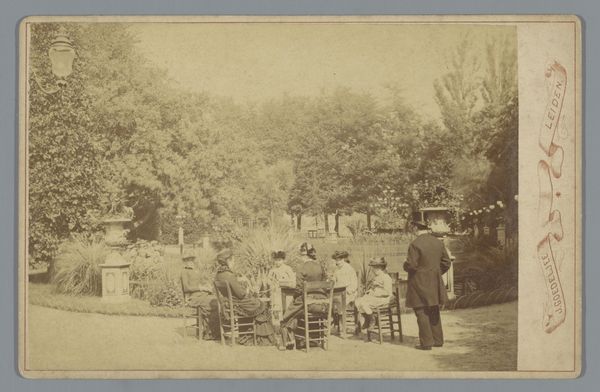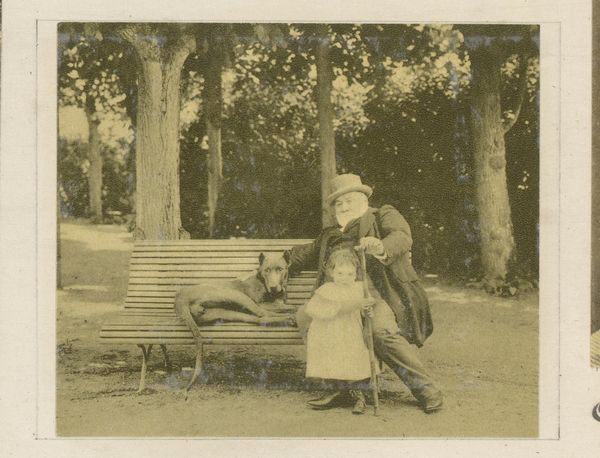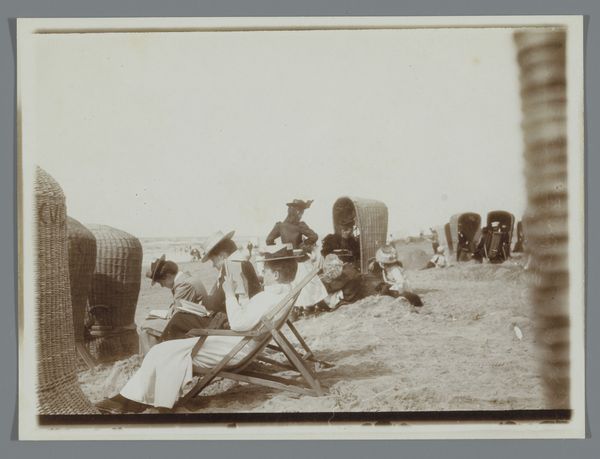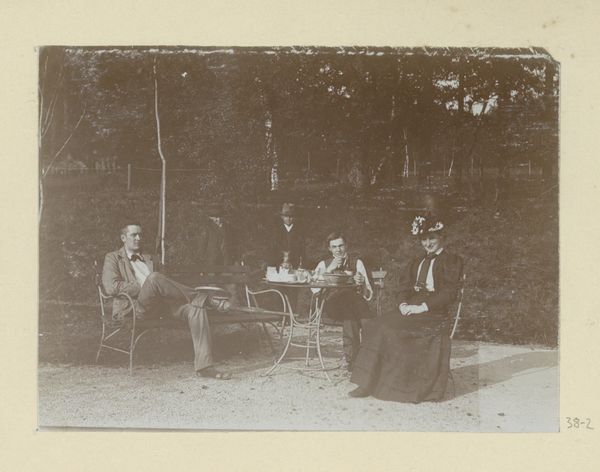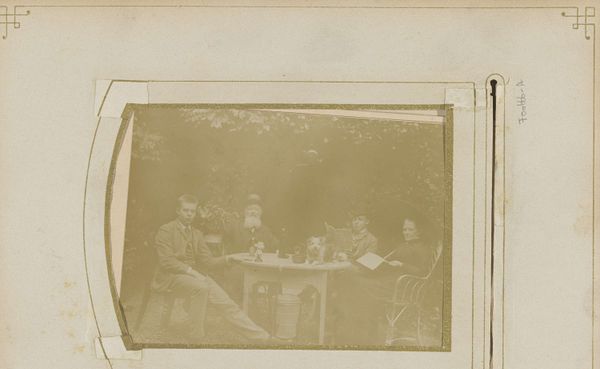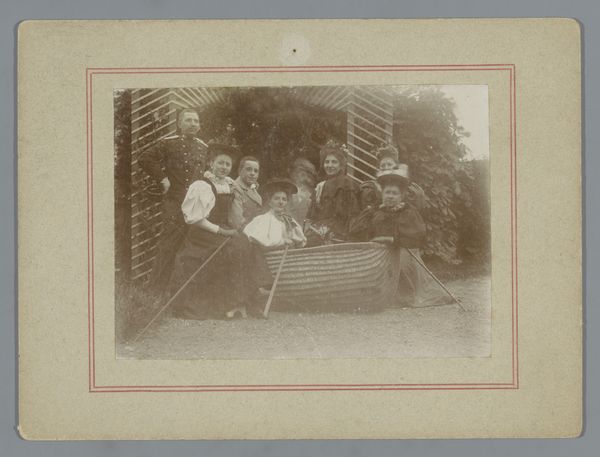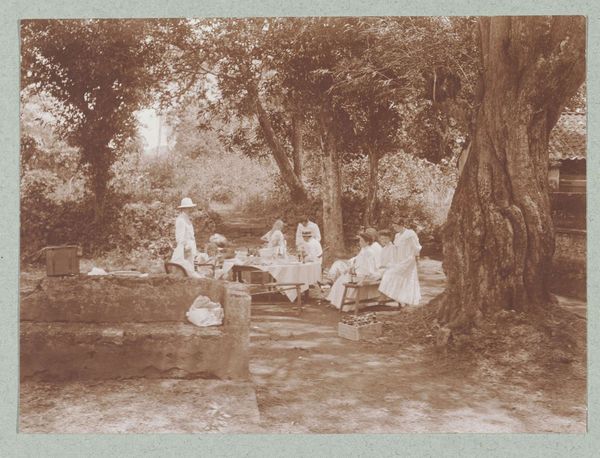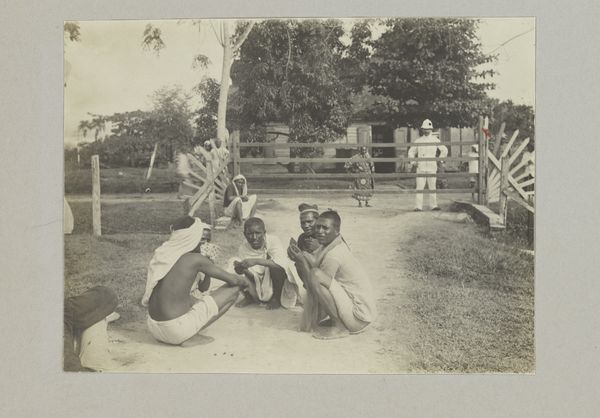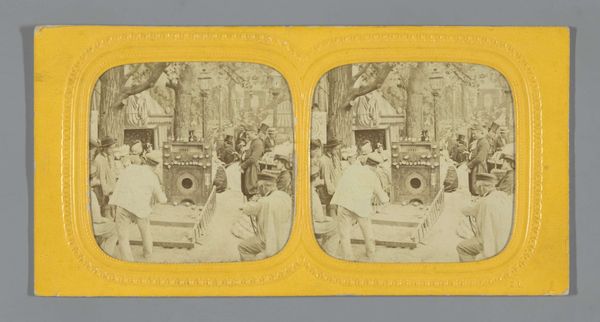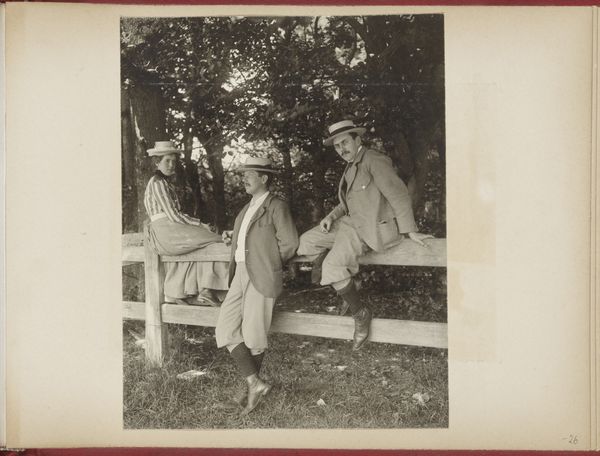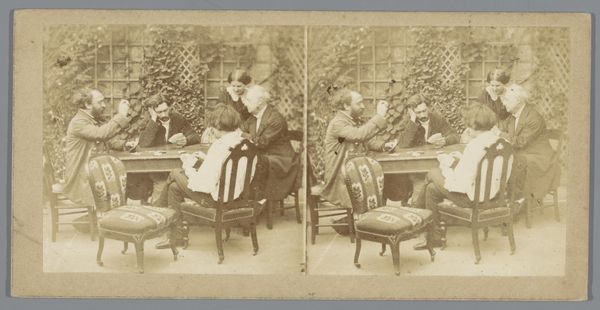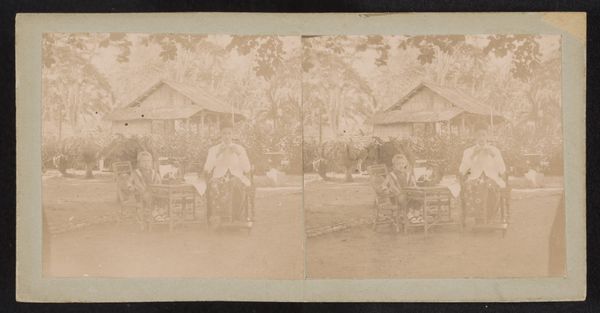
Dimensions: height 109 mm, width 169 mm
Copyright: Rijks Museum: Open Domain
Curator: This gelatin silver print, “In Love,” is after a painting by Marcus Stone, and dates to between 1870 and 1890. Editor: It feels incredibly staged. Look at their formal poses. They barely seem aware of each other! It’s melancholic, even if it’s meant to be romantic. Curator: These were popular reproductions meant for a burgeoning consumer market. Consider the socio-political implications of distributing idealized images of courtship so widely. This form of image circulation really reshaped the cultural landscape. Editor: And whose ideals are being centered, right? The very setup is constructed. A well-dressed man and woman in what reads as an idealized courtship in a garden. It's about projecting a particular kind of societal expectation, likely classist. Who has leisure time to stage such a romantic encounter? Curator: The genre-painting influence is significant here. Artists like Stone found popularity within a market eager for accessible narratives depicting everyday life—though perhaps through rose-tinted glasses, reflecting certain values. These values being domesticity, the pursuit of bourgeois happiness and the nuclear family. Editor: Precisely, these images helped standardize those narratives. It makes me think of contemporary advertising that, to this day, perpetuates so many of those themes around domesticity and gendered roles. Look how she's engaged in needlework and he seems disengaged in her presence, maybe contemplative. Curator: And let's not overlook the medium itself. Photography democratized image ownership but also changed our engagement with images. It enabled an increased capacity to circulate narratives far beyond the traditional art world venues, fundamentally altering art's societal function. Editor: A powerful distribution indeed! When you analyze the work considering those social dimensions, it's far more captivating. Beyond surface-level charm, it lays bare constructions that shape our experiences of intimacy and aspiration to the societal status quo, as always! Curator: Definitely! Thinking about the piece's wider cultural impact really allows us to delve beneath the seemingly placid subject matter. Editor: I’ll leave contemplating the commodification of "love" in a photograph. Food for thought, always.
Comments
No comments
Be the first to comment and join the conversation on the ultimate creative platform.
